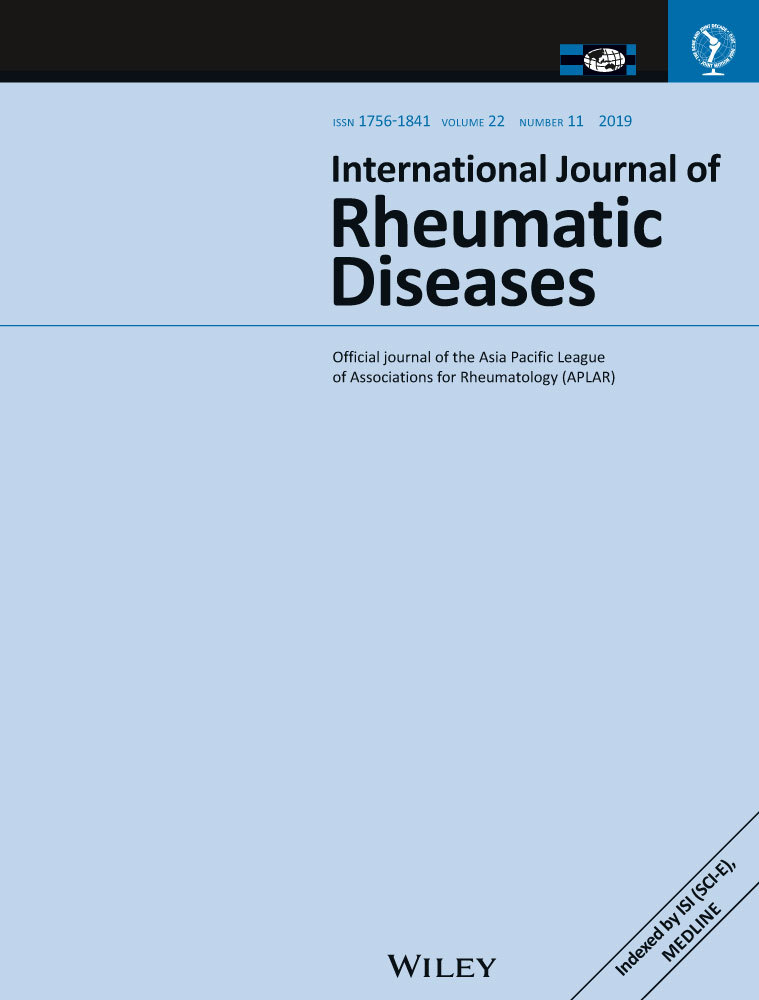Serum phosphatidylserine-specific phospholipase A1 as a novel biomarker for monitoring systemic lupus erythematosus disease activity
Abstract
Aim
To assess the utility of serum levels of phosphatidylserine-specific phospholipase A1 (PS-PLA1), a lipase involved in the production of lysophosphatidylserine with multi-immunomodulatory effects, in systemic lupus erythematosus (SLE).
Method
Serum PS-PLA1 was measured in 161 patients with SLE (including 54 untreated patients), 80 disease controls (35 active rheumatoid arthritis [RA], 23 Sjögren's syndrome [SS], and 22 systemic sclerosis [SSc]), and 237 healthy controls.
Results
Serum PS-PLA1 was significantly higher in SLE patients than in healthy controls, RA and SS patients. Although PS-PLA1 was significantly elevated in SSc and SS patients compared with healthy controls, PS-PLA1 was significantly higher in untreated SLE patients than in treated SLE patients and disease control patients. Receiver operating characteristic analysis revealed that a cut-off value of 18.2 ng/mL distinguished untreated SLE from disease control, with sensitivity and specificity of 71.4% and 57.5%, respectively. PS-PLA1 was significantly correlated with SLE Disease Activity Index (SLEDAI) and immunoglobulin G (IgG), and inversely correlated with white blood cell counts, lymphocyte counts, total complement hemolytic activity (CH50), complements C3, and C4 in SLE patients overall. Stepwise multiple regression identified SLEDAI, CH50, and IgG as significant parameters. In SLEDAI-based disease activity groups, PS-PLA1 was significantly higher in SLE patients with high disease activity than in those with low disease activity. PS-PLA1 decreased significantly in parallel with SLEDAI in 35 SLE patients whose paired serum samples were available pre- and post-treatment.
Conclusion
Serum PS-PLA1 is associated with disease activity of SLE, indicating its possible use as a biomarker for monitoring SLE disease activity.
CONFLICT OF INTEREST
YY, JA, TS, KI are listed on patents for PSPLA1 measurement (JP5288712, and JP5625155). MK, HS, YI, KT, HH, KF have no conflicts of interest directly relevant to the content of this article.




